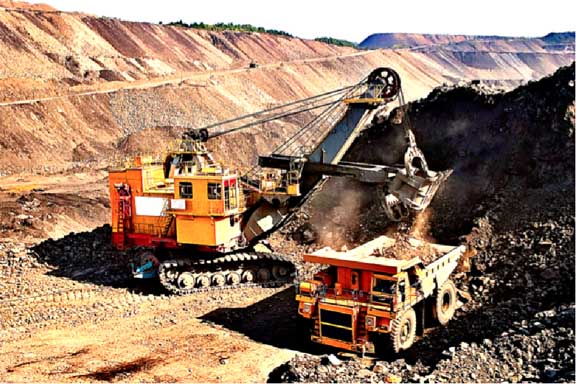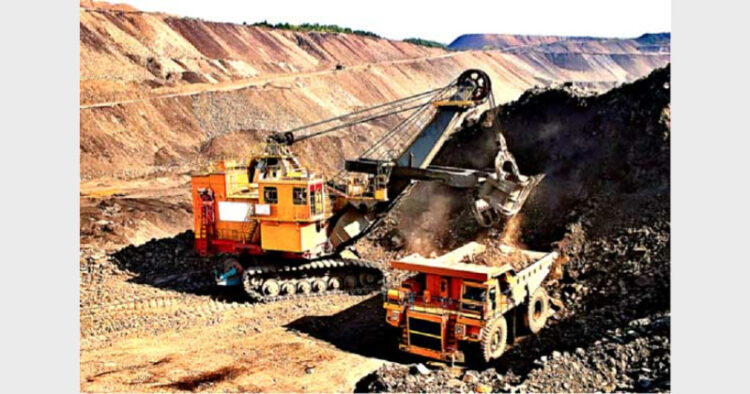 Construction and mining activities need to get a renewed push under the Make in India drive to harness resources
Construction and mining activities need to get a renewed push under the Make in India drive to harness resources
SN Aiyer
One sector which is bound to see a frantic pace of activity under the Make in India initiative is Construction and Mining. No doubt, mining has been one of the strong contributors to Bharat’s economic growth for several years and will continue to remain important given the huge natural resources our country possesses. However, construction activity has sadly been either neglected for several decades under the previous governments or has suffered due to corruption and improper attention to planned growth.
Keeping this in mind, now under the Make in India drive, USD 650 billion investments in urban infrastructure is estimated over the next 20 years and a 100% Foreign Direct Investment (FDI) is to be permitted through the automatic route for townships/cities to boost the Construction sector which today contributes 8% of the Indian GDP (at constant prices. The hallmark of the projected investments is the flagship project of 100 Smart Cities and 500 AMRUT Cities which alone will invite investment of 2 Trillion Rupees in the next five years. Besides, another INR 62,009 Crore would be invested under the other high-profile programme of Swachh Bharat Mission (SBM) in urban areas.
|
“Immense potential for employment generation” A vision for the future needs of growing Indian economy would be incomplete without exploiting the potential of housing and mining sectors. In an interview Ajay Sancheti, member of a leading Nagpur-based mining & construction conglomerate, shares his mind on the issue; What is your impression of the impact of the Make in India Scheme? |
Therefore, clearly, one can assess that the Construction sector in India will remain buoyant due to increased demand from real estate and infrastructure projects. It is worth also to remember that the construction sector accounts for second highest inflow of FDI after the services sector and employs more than 35 million people. A jump in projected growth here will hence translate on the ground to more jobs for workers all over the country.
Development of Cities
The Government of India’s new urban development mission will help develop 500 cities, which includes cities with a population of more than 100,000 and some cities of religious and tourist importance. These cities will be supported and encouraged to harness private capital and expertise through Public-Private Partnerships (PPPs), to bolster their infrastructure and services in the next 10 years.
For the Construction sector, major steps under the Make in India scheme being envisaged include: the Smart Cities Mission; Atal Mission for Rejuvenation and Urban Transformation (AMRUT); Swachh Bharat Mission (SBM); Heritage City Development and Augmentation Yojana (HRIDAY). Moreover, the National Industrial Corridor Authority, with its headquarters in Pune is being set up to coordinate the development of Industrial Corridors with emphasis on Smart Cities linked to transport connectivity to spur growth in manufacturing and urbanisation.
Also, the expectation is that the Master Planning of the Amritsar-Kolkata Industrial Corridor will be completed expeditiously for the development of Industrial Smart Cities in seven states of the country. The seven states to be covered in this project are Punjab, Haryana, Uttar Pradesh, Uttarakhand, Bihar, Jharkhand and West Bengal. Master planning of three new smart cities in the Chennai-Bengaluru Industrial Corridor region, viz., Ponneri in Tamil Nadu, Krishnapatnam in Andhra Pradesh and Tumkur in Karnataka are to be completed. A Perspective Plan for the Bengaluru Mumbai Economic Corridor and Vizag-Chennai Corridor is to be completed with provision for 20 new industrial clusters.
Mining Gains
Mining too is sure to see exciting prospects. This will have a cascading positive effect on the overall economy as the Mining sector is one of the core sectors of the economy. It provides basic raw materials to many important industries. The Mining sector (including fuel, atomic, major and minor minerals) contributed about 2.4% of GDP in 2014-15 as per the data released by Central Statistical Organisation under Ministry of Statistics & Programme Implementation. Surprisingly, Bharat, today produces as many as 88 minerals which include 4 fuels minerals, 3 atomic minerals, 26 metallic & non-metallic minerals and 55 minor minerals (including building and other materials).
Owing to the Make in India push, estimates show that the growth in the mining sector has significantly improved in comparison to recent past. It is pertinent to recall that the sector recorded a negative growth of 0.6% for two consecutive years (2011-12 and 2012-13). This turnaround is very much visible in terms of growth in Gross Value Added (GVA) in mining and quarrying sector. The sector grew by 5.4% and 2.4% in 2013-14 and 2014-15 respectively. During 2015-16, so far the sector has recorded a growth of 3.6% in comparison to the similar period last year. n














Comments